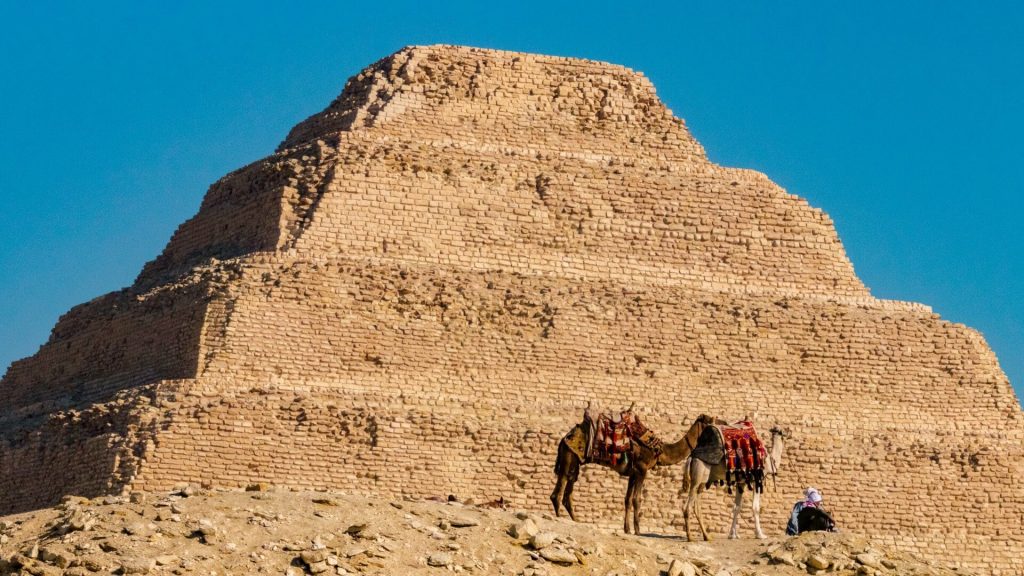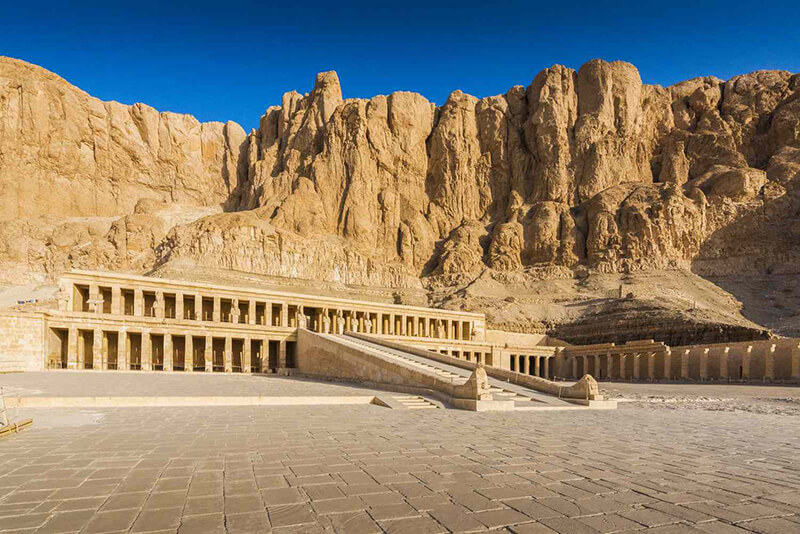During the Old Kingdom period of ancient Egyptian history, which lasted from about 2686 BC to 2181 BC, the pyramids were built. During the New Kingdom period, which lasted from about the 16th to the 11th centuries BC, the Valley of the Kings was used as a royal burial ground.
During the Third Dynasty, the Step Pyramid of Djoser at Saqqara was built. The Great Pyramids of Giza were built during the Fourth Dynasty. During the Fifth and Sixth Dynasties, pyramids continued to be built, but they were smaller and not as big.

During the 18th Dynasty, when Thutmose I was king, the Valley of the Kings was used to bury kings. This practice continued until the 20th Dynasty when Ramesses VI was king. During this time, many famous pharaohs, like Tutankhamun, Seti I, and Ramesses II, were buried in the Valley of the Kings.
So, both the pyramids and the Valley of the Kings were used to bury ancient Egyptian kings, but they were built at different times, many centuries apart.
In order to build a pyramid, workers had to dig up and move large blocks of stone, carve and shape them so they fit together perfectly, and then put them together in the shape of a pyramid. Skilled architects and engineers oversaw the building process. They were able to design and build these impressive buildings with only the most basic tools.
Some things about how the pyramids were built are still a mystery, but there is no evidence that the ancient Egyptians found already-built pyramids and used them for their own purposes. The ancient Egyptians built the pyramids, which were unique and innovative pieces of architecture.
During the New Kingdom, when rock-cut tombs replaced pyramids in the Valley of the Kings, it wasn’t because there wasn’t enough room to build pyramids. Rather, it was probably because they wanted to protect the pharaoh’s tomb from tomb robbers, who had become a big problem as the pyramid building went on.
Tomb robbers got better at finding and breaking into pyramids as they got bigger and more complicated. By the time of the New Kingdom, the pharaohs knew that the shape of the pyramid was no longer a safe way to keep their tombs and their burial goods safe.
The rock-cut tombs of the Valley of the Kings were a safer alternative because they were built into the cliffs of the Theban Hills and were therefore harder to find and rob. The tombs in the Valley of the Kings were also smaller and less grand than the pyramids, which may have made them less appealing to tomb robbers.
So, the change from building pyramids to making tombs out of rock may have been influenced by practical concerns, like the need for better security, but it wasn’t just because they ran out of space and materials to build pyramids. It was a big change in the way ancient Egyptians did funerals, and it was caused by a mix of practical, social, and religious factors.
If you like this article you might like this article too “Could Water Play A Role In The Pyramids History“

